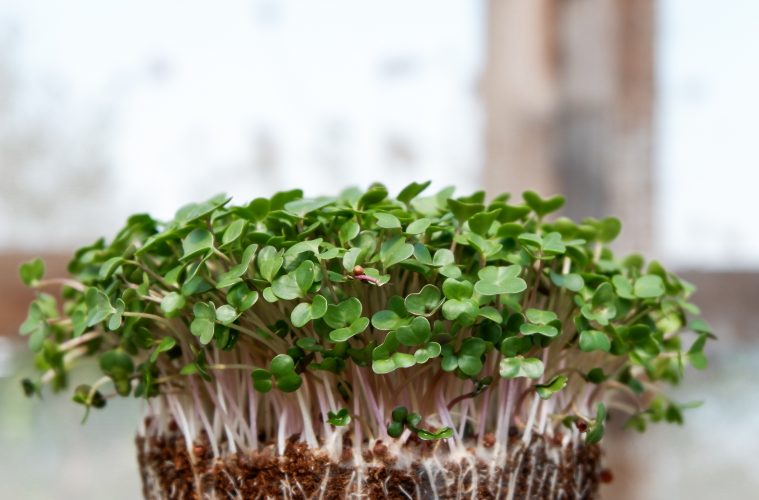More than just the faddish darlings of trendy chefs, microgreens are finding a fresh way into home kitchens. These succulent seedlings of a variety of vegetables and herbs are becoming widely used as part of the typical family diet. It’s not just because microgreens render every plate instagrammable – when it comes to nutritional power, they punch way above their weight. Now, fans of microgreens are discovering that they are also remarkably easy to grow at home.
With winter on the way, this is a good time to look at new ways to include healthy greens in your daily diet. Here are the top four reasons to start cultivating microgreens at home.
4 Reasons to grow microgreens at home this winter
1. Tiny plants, but really big on nutrient density
Microgreens, the densely grown seedlings of veg such as radish, beetroot and broccoli; greens such as pak choi, mustards and cress or herbs such as basil and coriander are much more than sprouts. Typically harvested within 14 days, microgreens feature the first ‘seed leaves’ to emerge, and sometimes also the earliest true leaves of the plant. A widely cited 2012 study, first published in the Journal of Agricultural and Food Chemistry, identified that microgreens contain a higher concentration of many nutrients in comparison to the full grown plants. This has led to microgreens being regarded as a functional food, promoting health and helping to prevent disease.
The small size and short growth period is also an advantage when it comes to growing microgreens at home. You don’t need any garden space as microgreens are best grown indoors and you can get a reasonable harvest using small containers. Successive sowing can ensure an ongoing supply of fresh, nutrient-packed greens daily. Depending on the variety, microgreens are good sources of vitamins A, B, C, E and K as well as essential trace nutrients such as calcium, potassium, iron, magnesium, phosphorus, zinc, copper, iodine, manganese and sodium.
2. Don’t forget that they are delicious
Microgreens are not just delicately good-looking and nutritionally good for you; they are also flavourful and add wonderful texture to food. From the sweet, crispy crunch of tiny broccoli to the earthy freshness and rich colour of beetroot seedlings, microgreens can also be tangy (cress) and spicey (radish). Don’t just decorate the plate, add generous handfuls of microgreens as fresh toppings for pizza, baked potatoes or scrambled eggs; include them in salads, poke bowls and smoothies. They also add crunch, freshness and flavour to pancakes, sandwiches and toast treats.
3. Fresh greens – all weather, all-year round
The beauty of growing microgreens at home is that they can be cultivated all year round. In fact, all you need is a light, bright windowsill. They’re indoor growing so you are not bound by seasonal planting and don’t have to miss out on any of the goodness of spring and summer veg and herbs. Topping any winter dish with microgreens also gives you an important nutritional lift at a time when our meals tend to be heavier but lower in nutritious greens.
4. Super easy and cost-effective to grow yourself
Even if you don’t believe you have green fingers, it’s easy to be successful in growing microgreens. To get started, consider neat grow kits such as Feelgood Health’s My Growing Health range which includes five different varieties of popular microgreens, compostable containers, bamboo rakes and good quality soil.
All you do is put most of the soil into the container and rake it over to level the soil. Sprinkle the seeds evenly over the surface and then use the remaining soil to make a thin covering. Using a spray bottle, water the seeds and put the container in a well-lit spot, though it shouldn’t get direct sunlight. Spray with water each day, and soon the little seedlings will pop through the soil. You can start harvesting when the first seed leaves are well-formed, after about seven days, by using scissors to cut the greens above the soil level.
There’s no fresher nutritional punch, produced at home with zero food miles from seed to food! Succession planting ensures that you can always have an affordable microgreen supply. It’s also fun and flavourful to grow more than one variety at a time. My Growing Health includes grow kits for broccoli, watercress, Chinese cabbage, Japanese radish and beetroot microgreens. The combination is a stunning taste sensation, delightfully colourful and adds a fresh flair to every plate. There’s probably no easier way to impress your dinner guests and IG friends, while also boosting your family’s health!
ALSO SEE: HOW TO GROW MICROGREENS

